
OPERATOR’S MANUAL
ANGLE SWEEPER
Industrial Series
FOR
SKID STEER LOADERS

Serial Number:
Model
Number:
Manual Number: 51-4161
Date: August 2018
Serial Number: 0911001 & Up
Rev. 3

3
51-4161
(888) 888-1085 I www.SpartanEquipment.com , United States of America Copyright ©

4
51-4161
TABLE OF CONTENTS
PREFACE.................................................................................................................................5
SAFETY PRECAUTIONS
Safety Statements .........................................................................................................6
General Safety
Precautions........................................................................................
6-8
Equipment Safety Precautions
.................................................................................
9-10
DECALS............................................................................................................................11-12
INSTALLATION......................................................................................................................13
OPERATION
Intended Use ...............................................................................................................14
Controls .......................................................................................................................14
Staring and Stopping / Travel Direction / Brush Speed / Run, Swing and Lift
Manual Angle / Hydraulic Angle
Before Operating Sweeper ..........................................................................................14
Operation .....................................................................................................................15
Adjusting Spring / Transport Chain Assembly..............................................................16
Brush Pattern Adjustment ............................................................................................16
Operating Tips .............................................................................................................17
Storage
...................................................................................................................
17-18
Lift Points
................................................................................................................
18-19
Tie Down Points...........................................................................................................19
Transporting.................................................................................................................19
LUBRICATION
.......................................................................................................................20
MAINTENANCE
Routine Maintenance...................................................................................................21
Leveling
..................................................................................................................
22-23
Replacing Brush Sections............................................................................................24
TROUBLESHOOTING
......................................................................................................
25-30
SPECIFICATIONS
Sweeper Specifications ...............................................................................................31
Bolt Torque Specifications ...........................................................................................32
PARTS /
W
ARRANTY ............................................................................................................33

5
51-4161
THIS
PAGE
IS
INTENTIONALLY
BLANK

4
51-4161
GENERAL COMMENTS PREFACE
Congratulations on the purchase of your new product! This product was carefully designed
and manufactured to give you many years of dependable service. Only minor maintenance (such
as cleaning and lubricating) is required to keep it in top working condition. Be sure to observe all
maintenance procedures and safety precautions in this manual and on any safety decals located
on the product and on any equipment on which the attachment is mounted.
This manual has been designed to help you do a better, safer job. Read this manual care-
fully and become familiar with its contents.
WARNING! Never let anyone operate this unit without reading the "Safety Precautions"
and "Operating Instructions" sections of this manual.
Always choose hard, level ground to park the vehicle on and set the brake
so the unit cannot roll.
Unless noted otherwise, right and left sides are determined from the operator’s control posi-
tion when facing forward.
NOTE: The illustrations and data used in this manual were current (according to the infor-
mation available to us) at the time of printing, however, we reserve the right to redesign and
change the attachment as may be necessary without notification.
BEFORE OPERATION
The primary responsibility for safety with this equipment falls to the operator. Make sure the
equipment is operated only by trained individuals that have read and understand this manual. If
there is any portion of this manual or function you do not understand, contact your local authorized
dealer or the manufacturer to obtain further assistance. Keep this manual available for reference.
Provide the manual to any new owners and/or operators.
SAFETY ALERT SYMBOL
This is the “Safety Alert Symbol” used by this industry. This symbol is used to warn
of possible injury. Be sure to read all warnings carefully. They are included for your
safety and for the safety of others working with you.
SERVICE
Use only manufacturer replacement parts. Substitute parts may not meet the required stan-
dards.
Record the model and serial number of your unit on the cover of this manual. The parts
department needs this information to insure that you receive the correct parts.
SOUND AND VIBRATION
Sound pressure levels and vibration data for this attachment are influenced by many different param-
eters: some items are listed below (not inclusive):
• prime mover type, age, condition, with or without cab enclosure and configuration
• operator training, behavior, stress level
• job site organization, working material condition, environment
Based on the uncertainty of the prime mover, operator, and job site, it is not possible to get precise ma-
chine and operator sound pressure levels or vibration levels for this attachment.
NOTE:
A
list
of
all
Spartan Equipment
Patents can
be
found
at http://www.Spartan Equipment.com

7
51-4161
SAFETY STATEMENTS
THIS SYMBOL BY ITSELF OR WITH A WARNING WORD THROUGHOUT THIS
MANUAL IS USED TO CALL YOUR ATTENTION TO INSTRUCTIONS INVOLVING
YOUR PERSONAL SAFETY OR THE SAFETY OF OTHERS. FAILURE TO FOLLOW
THESE INSTRUCTIONS CAN RESULT IN INJURY OR DEATH.
DANGER
WARNING
CAUTION
NOTICE
THIS SIGNAL WORD INDICATES A HAZARDOUS SITUATION WHICH, IF
NOT AVOIDED, WILL RESULT IN DEATH OR SERIOUS INJURY.
THIS SIGNAL WORD INDICATES A HAZARDOUS SITUATION WHICH, IF
NOT AVOIDED, COULD RESULT IN DEATH OR SERIOUS INJURY.
THIS SIGNAL WORD INDICATES A HAZARDOUS SITUATION WHICH, IF
NOT AVOIDED, COULD RESULT IN MINOR OR MODERATE INJURY.
NOTICE IS USED TO ADDRESS PRACTICES NOT RELATED TO PHYSICAL
INJURY.
GENERAL SAFETY PRECAUTIONS
WARNING! READ MANUAL PRIOR TO INSTALLATION
Improper installation, operation, or maintenance of this equipment could result in
serious injury or death. Operators and maintenance personnel should read this man-
ual, as well as all manuals related to this equipment and the prime mover thoroughly
before beginning installation, operation, or maintenance. FOLLOW ALL SAFETY
INSTRUCTIONS IN THIS MANUAL AND THE PRIME MOVER’S MANUAL(S).
READ AND UNDERSTAND ALL SAFETY STATEMENTS
Read all safety decals and safety statements in all manuals prior to operating or
working on this equipment. Know and obey all OSHA regulations, local laws, and
other professional guidelines for your operation. Know and follow good work
practices when assembling, maintaining, repairing, mounting, removing, or operating
this equipment.
KNOW YOUR EQUIPMENT
Know your equipment’s capabilities, dimensions, and operations before operating.
Visually inspect your equipment before you start, and never operate equipment that
is not in proper working order with all safety devices intact. Check all hardware to
ensure it is tight. Make certain that all locking pins, latches, and connection devices
are properly installed and secured. Remove and replace any damaged, fatigued, or
excessively worn parts. Make certain all safety decals are in place and are legible.
Keep decals clean, and replace them if they become worn or hard to read.

6
51-4161
GENERAL SAFETY PRECAUTIONS
WARNING! PROTECT AGAINST FLYING DEBRIS
Always wear proper safety glasses, goggles, or a face shield when driving pins in or
out, or when any operation causes dust, flying debris, or any other hazardous mate-
rial.
WARNING! LOWER OR SUPPORT RAISED EQUIPMENT
Do not work under raised booms without supporting them. Do not use support mate-
rial made of concrete blocks, logs, buckets, barrels, or any other material that could
suddenly collapse or shift positions. Make sure support material is solid, not de-
cayed, warped, twisted, or tapered. Lower booms to ground level or on blocks. Lower
booms and attachments to the ground before leaving the cab or operator’s station.
WARNING! USE CARE WITH HYDRAULIC FLUID PRESSURE
Hydraulic fluid under pressure can penetrate the skin and cause serious injury or
death. Hydraulic leaks under pressure may not be visible. Before connecting or dis-
connecting hydraulic hoses, read your prime mover’s operator’s manual for detailed
instructions on connecting and disconnecting hydraulic hoses or fittings.
• Keep unprotected body parts, such as face, eyes, and arms as far away as
possible from a suspected leak. Flesh injected with hydraulic fluid may develop
gangrene or other permanent disabilities.
• If injured by injected fluid, see a doctor at once. If your doctor is not familiar with
this type of injury, ask him to research it immediately to determine proper treat-
ment.
• Wear safety glasses, protective clothing, and use a piece of cardboard or wood
when searching for hydraulic leaks. DO NOT USE YOUR HANDS!
SEE ILLUSTRATION.
CARDBOARD
HYDRAULIC HOSE
OR FITTING
MAGNIFYING GLASS

9
51-4161
GENERAL SAFETY PRECAUTIONS
WARNING! DO NOT MODIFY MACHINE OR ATTACHMENTS
Modifications may weaken the integrity of the attachment and may impair the func-
tion, safety, life, and performance of the attachment. When making repairs, use only
the manufacturer’s genuine parts, following authorized instructions. Other parts may
be substandard in fit and quality. Never modify any ROPS (Roll Over Protective
Structure) or FOPS (Falling Object Protective Structure) equipment or device. Any
modifications must be authorized in writing by the manufacturer.
WARNING! SAFELY MAINTAIN AND REPAIR
EQUIPMENT
• Do not wear loose clothing or any accessories that can catch in moving parts. If
you have long hair, cover or secure it so that it does not become entangled in the
equipment.
• Work on a level surface in a well-lit area.
• Use properly grounded electrical outlets and tools.
• Use the correct tools for the job at hand. Make sure they are in good condition for
the task required.
• Wear the protective equipment specified by the tool manufacturer.
SAFELY OPERATE EQUIPMENT
Do not operate equipment until you are completely trained by a qualified operator in
how to use the controls, know its capabilities, dimensions, and all safety
requirements. See your machine’s manual for these instructions.
• Keep all step plates, grab bars, pedals, and controls free of dirt, grease, debris,
and oil.
• Never allow anyone to be around the equipment when it is operating.
• Do not allow riders on the attachment or the prime mover.
• Do not operate the equipment from anywhere other than the correct operator’s
position.
• Never leave equipment unattended with the engine running, or with this
attachment in a raised position.
• Do not alter or remove any safety feature from the prime mover or this
attachment.
• Know your work site safety rules as well as traffic rules and flow. When in doubt
on any safety issue, contact your supervisor or safety coordinator for an
explanation.
WARNING! CALIFORNIA PROPOSITION 65 WARNING.
This product may contain a chemical known to the state of California to cause
cancer, or birth defects or other reproductive harm. www.P65Warnings.ca.gov

8
51-4161
EQUIPMENT SAFETY PRECAUTIONS
WARNING! KNOW WHERE UTILITIES ARE
Observe overhead electrical and other utility lines. Be sure equipment will clear
them. When digging, call your local utilities for location of buried utility lines, gas,
water, and sewer, as well as any other hazard you may encounter.
WARNING! EXPOSURE TO RESPIRABLE CRYSTALLINE SILICA DUST
ALONG WITH OTHER HAZARDOUS DUSTS MAY CAUSE
SERIOUS OR FATAL RESPIRATORY DISEASE.
It is recommended to use dust suppression, dust collection and if necessary
personal protective equipment during the operation of any attachment that may
cause high levels of dust.
WARNING! REMOVE PAINT BEFORE WELDING OR HEATING
Hazardous fumes/dust can be generated when paint is heated by welding, soldering
or using a torch. Do all work outside or in a well ventilated area and dispose of paint
and solvent properly. Remove paint before welding or heating.
When sanding or grinding paint, avoid breathing the dust. Wear an approved
respirator. If you use solvent or paint stripper, remove stripper with soap and water
before welding. Remove solvent or paint stripper containers and other flammable
material from area. Allow fumes to disperse at least 15 minutes before welding or
heating.
WARNING! END OF LIFE DISPOSAL
At the completion of the useful life of the unit, drain all fluids and dismantle by
separating the different materials (rubber, steel, plastic, etc.). Follow all federal, state
and local regulations for recycling and disposal of the fluid and components.
OPERATING THE SWEEPER
• Do not exceed the lifting capacity of your prime mover.
• Operate only from the operator’s station.
• When traveling on rough terrain, reduce speed to avoid “bouncing” the sweeper.
Loss of steering can result.
• When operating on slopes, drive up and down, not across. Avoid steep hillside
operation, which could cause the prime mover to overturn.
• Reduce speed when driving over rough terrain, on a slope, or turning, to avoid
overturning the vehicle.
• An operator must not use drugs or alcohol, which can change his or her alertness
or coordination. An operator taking prescription or over-the-counter drugs should
seek medical advice on whether or not he or she can safely operate equipment.
• Before exiting the prime mover, lower the attachment to the ground, apply the
brakes, turn off the prime mover’s engine and remove the key.
• Remove any large objects from the work area that could harm operator or others
if thrown by sweeper.

11
51-4161
EQUIPMENT SAFETY PRECAUTIONS
TRANSPORTING THE SWEEPER
• Travel only with the attachment in a safe transport position to prevent
uncontrolled movement. Drive slowly over rough ground and on slopes.
• When transporting on a trailer: Secure attachment at recommended tie down
locations using tie down accessories that are capable of maintaining attachment
stability.
• When driving on public roads use safety lights, reflectors, Slow Moving Vehicle
signs etc., to prevent accidents. Check local government regulations that may
affect you.
• Do not drive close to ditches, excavations, etc., cave in could result.
• Do not smoke when refueling the prime mover. Allow room in the fuel tank for
expansion. Wipe up any spilled fuel. Secure cap tightly when done.
MAINTAINING THE SWEEPER
• Before performing maintenance, lower the attachment to the ground, apply the
brakes, turn off the engine and remove the key.
• Never perform any work on the attachment unless you are authorized and qual-
ified to do so. Always read the operator service manuals before any repair is
made. After completing maintenance or repair, check for correct functioning of
the attachment. If not functioning properly, always tag “DO NOT OPERATE” until
all problems are corrected.
• Worn, damaged, or illegible safety decals must be replaced. New safety decals
can be ordered from Spartan Equipment.
• Never make hydraulic repairs while the system is under pressure. Serious per-
sonal injury or death could result.
• Never work under a raised attachment.

10
51-4161
GENERAL INFORMATION
DECALS
DECALS PLACEMENT
The diagram on this page shows the location of the decals used on your attachment.
The decals are identified by their part numbers, with reductions of the actual decals located
on the following page. Use this information to order replacements for lost or damaged decals.
Be sure to read all decals before operating the attachment. They contain information you need
to know for both safety and product longevity.
#50-0726
#50-0724
#41043
#50-0724
#50-0726
MANUAL
TUBE
#07-6869
#50-0721
#50-0643
#50-0722
SERIAL TAG LOCATION
#50-0721
IMPORTANT: Keep all safety decals clean and legible. Replace all missing, illegible, or damaged safety decals.
When replacing parts with safety decals attached, the safety decals must also be replaced. Safety decals are
available, free of charge, from your local dealer or Spartan Equipment.
REPLACING SAFETY DECALS: Clean the area of application with nonflammable solvent, then wash the same
area with soap and water. Allow the surface to fully dry. Remove the backing from the safety decal, exposing the
adhesive surface. Apply the safety decal to the position shown in the diagram above and smooth out any bubbles.

13
51-4161
DECALS
#41043
WARNING! HAZARDOUS DUST
#50-0643
TIE DOWN POINT
#50-0721
WARNING! CRUSH HAZARD
#50-0722
WARNING! MISUSE HAZARD #50-0724
WARNING! HIGH
PRESSURE FLUID
#50-0726
WARNING! FLYING OBJECTS /
ENTANGLEMENT
NOTE: CONTACT YOUR LOCAL DEALER FOR MODEL NUMBER
AND LOGO DECALS

12
51-4161
INSTALL
A
TION
INSTALLATION
1. Position the broom on a level surface.
2. Remove any attachment from the front of the prime mover.
3. Following all standard safety practices and the instructions for installing an attachment
in your prime mover operator’s manual, install the attachment onto your loader.
WARNING! To avoid serious personal injury, make sure the attachment is securely
latched to the attachment mechanism of your unit. Failure to do so could
result in separation of the attachment from the prime mover.
3. Lower the unit to the ground and relieve pressure to the auxiliary hydraulic lines.
4. Following the safety shut down procedure for your prime mover, shut down and exit the
prime mover.
5. Lock jack stands in stowed position. (if available)
6. After making sure that the hydraulic couplers are free from any foreign material or con-
taminants, connect the couplers to the auxiliary hydraulic system of your prime mover.
7. While the loader arms are lowered, visually inspect the attachment mechanism to
ensure that it is securely mounted.
8. Following the standard start up procedure for your prime mover, start the loader and run
all cylinders on the attachment to purge any air from the system.
9. Carefully raise the loader and cycle the rollback/dump cylinders to check clearances.
Verify that all mounting procedures have been successfully completed.
10. Attachment installation is complete.
DETACHING
Notice! Hoses for the sweepers must be removed before the quick attach is disen-
gaged. Pulling the sweeper with the hoses could result in damage to the prime mover or
sweeper.
1. Before exiting the prime mover, lower the attachment to the ground, apply the brakes,
turn off the prime mover’s engine, and remove the key.
2. Follow prime mover operator’s manual to relieve pressure in the hydraulic lines.
3. Lock jack stands in lowered position. (if available)
4. Disconnect power and return hoses from the auxiliary hydraulics.
5. Connect hydraulic couplers together or install caps to prevent contaminants from enter-
ing the hydraulic system. Store hoses off of the ground to help prevent damage.
6. Follow your prime mover operator’s manual for detaching (removing) an attachment.

OPERATION
15
51-4161
INTENDED USE:
This sweeper is designed solely for use in construction cleanup, road maintenance and similar
operations. Use in any other way is considered contrary to intended use. Compliance with and
strict adherence to operation, service and repair conditions as specified by the manufacturer,
are essential elements of intended use.
STARTING AND STOPPING THE SWEEPER
The sweeper uses the prime mover hydraulic flow to operate. To start the brush, turn on
the prime mover auxiliary hydraulics. To stop the brush, turn off the auxiliary hydraulic flow. To
avoid motor damage, do not stop the sweeper at high engine speed. Decrease engine RPM
before turning off the hydraulic flow.
TRAVEL DIRECTION
Travel should be in the forward direction and brush rotation always away from the
operator.
BRUSH SPEED
To increase brush speed, increase prime mover RPM. Use the LOWEST speed needed
to complete the job at hand. In general, half throttle provides the necessary engine speed.
RUN, SWING AND LIFT CONTROLS
Run, swing and lift functions vary according to how the unit is equipped. The sweeper
controls are activated by switches on the control box. Refer to operation decal on control box.
MANUAL ANGLE
• Remove the lock pin from links.
• Position the brush head at the desired angle, aligning holes in the inner and outer link.
• Insert and close the lock pin.
HYDRAULIC ANGLE
• Start the prime mover.
• Engage the hydraulics.
• Position the brush head at the desired angle.
BEFORE OPERATING SWEEPER:
• Adjust brush pattern for optimum sweeping performance.
• Learn sweeper and prime mover controls in an off-road location.
• Be sure you are in a safe area, away from traffic or other hazards.
• Check to make sure the attachment is securely latched to the attachment mechanism on
your prime mover.
• Complete daily maintenance checklist. (See Maintenance Section)
• Remove all property that could be damaged by flying debris from sweeping area.
• Be sure all persons not operating the sweeper are clear of sweeper discharge area.
• Always wear proper apparel and PPE (personal protective equipment) for your work site.

OPERATION
14
51-4161
DANGER! Avoid electrical shock. Stay away from overhead wires.
WHILE OPERATING SWEEPER:
• When operating sweeper, adhere to all government rules, local laws and other professional
guidelines for your sweeping application.
• Avoid excessive downward pressure on brush sections to prevent excessive wear. A 2 to 4 inch
(5-10 cm) wide pattern is sufficient for most applications. Ensure that the sweeper is level to prevent
uneven wear pattern.
• Before exiting the prime mover, lower the attachment to the ground, apply the brakes, turn
off the prim mover’s engine and remove the key.
• Minimize flying debris - use slowest rotating speed that will do the job.
• Keep hands, feet, hair and other loose clothing away from all moving parts.
• Leave all shields and safety equipment in place when operating sweeper and primer mover.
• Be aware of the extra weight and width a sweeper adds. Reduce travel speed accordingly.
Keep in mind the center of gravity changes when an attachment is installed.
• When traveling on rough terrain, reduce speed to avoid “bouncing” the sweeper. Loss of
steering can result.
• Never sweep toward people, buildings, vehicles or other objects that can be damaged by
flying debris.
• Only operate sweeper from the operator’s station of the prime mover. Seat belt fastened
and protective glasses worn. Only operate controls while the engine is running.
• Operate sweeper slowly in open area, check for proper operation of all controls and all
protective devices. Report any needed repairs.
OPERATION
Carry the sweeper low to the ground so the operator has good visibility and stability. Avoid any
sudden movements.
Observe wind direction. Sweeping with the wind makes sweeping more effective and helps
keep debris off the operator.
The terms swing and angle are used interchangeably.
Basic Sweeping Operation:
With the sweeper level and the brush pattern adjusted you are ready to begin sweeping.
1. Swing the brush head assembly in the direction that you want to direct debris.
2. Start the prime mover at an idle and raise the brush.
3. Engage the brush head and then lower it to the ground.
4. Increase prime mover engine RPM. Using the lowest speed needed to complete the job
at hand.
5. Begin forward travel at 5 MPH (8 kph) or less.

OPERATION
17
51-4161
BRUSH PATTERN ADJUSTMENT
A properly adjusted brush offers the best sweeper
performance. To check the brush pattern:
FIGURE #1
1. Move the sweeper to a dusty, flat surface.
2. Set the prime mover’s parking brake and
leave the engine running.
3. Start the sweeper at a slow speed: lower
it so the bristle tips touch the ground. Run
the sweeper in a stationary position for 10
seconds.
4. Raise the sweeper and back away; switch
off the engine and remove the key. The
brush pattern left in the dust should be
2”-4” (51-102 mm) wide, running the length
of the brush. (Compare the swept area with
Figure #1.)
5. Adjust the brush pattern as necessary
according to instructions found in adjusting
the Spring/Transport Chain Assembly.
Swept Area
2”-4”
(51-102 mm)
ADJUSTING SPRING/TRANSPORT CHAIN ASSEMBLY
The spring/transport chain assembly allows the brush head to pivot up and down but it
also supports the weight of the brush head assembly during transport between work sites.
INSTALLATION AND ADJUSTMENT:
1. Lower the sweeper.
2. Install the quick links to the first and eighth link on the chain. See Figure #2
3. Install the spring to the second quick link. See Figure #2
4. Connect the spring to the upper hole in back of the brush frame and the remaining quick
link to the center hole. See Figure #2
5. Lower the sweeper and
connect the chain to the chain
holder on the mount.
6. To adjust the chain for a proper
brush pattern: Move the chain
forward in the swing assembly
chain holder to lower the brush
head or backward in the holder
to raise the brush head.
FIGURE #2
BRUSH FRAME
SPRING
SPRING/TRANSPORT
CHAIN
FINAL
COIL
MUST BE
ON
TOP
CHAIN HOLDER QUICK LINK
(Install
in 1st and 8th Link
of
Chain)

OPERATION
16
51-4161
OPERATING TIPS
Vary brush, engine and travel speeds to match sweeping conditions.
LARGE AREAS
When sweeping a large area, such as a parking lot, make a path down the middle and sweep
to both sides. This reduces the amount of debris that the sweeper must sweep to one side.
SNOW
Fast brush speeds and slow travel speeds are needed to sweep snow effectively. Start at 3/4
throttle and the lowest gear of the prime mover. For wet and/or deep snow, increase to almost
full throttle. This helps keep snow from packing up inside the brush hood.
NOTICE: For best sweeping results, we recommend that the swing assembly be 21”
(533mm) above the ground. Failure to maintain this distance allows for swept material to
be carried over the brush and back onto the swept area.
In deep snow you may need to make multiple passes to get down to a clean surface.
Always sweep with the wind at your back.
DIRT & GRAVEL
To keep dust at a minimum, use the optional dust suppression kit or plan sweeping for days
when it is overcast and humid or after it has rained.
Low brush speeds and moderate travel speeds work best for cleaning debris from hard sur-
faces. Brush speeds that are too fast tend to raise dust.
To sweep gravel, use just enough brush speed to “roll” the gravel, not throw it.
OPTIONAL DUST SUPPRESSION
The sprinkler system kit and water tank contains enough nozzles and hose to install on
the top of the brush head, on the back side of the brush head or on the front of the optional
180 hood.
STORAGE:
Notice! Do not store the sweeper with weight on the brush. Weight will deform the
bristles, destroying the sweeping effectiveness. To avoid the problem, place the
sweeper on blocks or use storage stands.
Notice! Do not store polypropylene brushes in direct sunlight. The material can
deteriorate and crumble before the bristles are worn out. Keep polypropylene brush
material away from intense heat or flame.

OPERATION
19
51-4161
STORAGE (Continued):
• Clean the unit thoroughly, removing all snow, dirt and grease.
• Inspect for visible signs of wear, breakage or damage. Order any parts required and make
the necessary repairs to avoid delays upon removal from storage.
• Tighten loose nuts, capscrews and hydraulic connections.
• Coat exposed portions of the cylinder rods with grease.
• Lubricate grease fittings.
• Seal hydraulic system from contaminants and secure all hydraulic hoses off the ground to
help prevent damage.
• Replace decals that are damaged or in unreadable condition.
• Store unit in a dry and protected place. Leaving the unit outside will materially shorten its
life.
Additional Precautions for Long Term Storage:
• Touch up all unpainted surfaces with paint to avoid rust.
REMOVAL FROM STORAGE:
• Remove cover.
• Wash unit and replace any damage and/or missing parts.
• Lubricate grease fittings.
• Check hydraulic hoses for damage and replace as necessary.
LIFT POINTS
Lifting points are identified by lifting decals where required. Lifting at other points is
unsafe and can damage attachment. Do not attach lifting accessories around cylinders or in
any way that may damage hoses or hydraulic components. See Diagram.
• Attach lifting accessories to unit at
recommended lifting points.
• Bring lifting accessories together to a
central lifting point.
• Lift gradually, maintaining the equilibrium
of the unit.

OPERATION
18
51-4161
WARNING! Use lifting accessories (chains, slings, ropes, shackles and etc.) that are
capable of supporting the size and weight of your attachment. Secure all
lifting accessories in such a way to prevent unintended disengagement.
Failure to do so could result in the attachment falling and causing serious
personal injury or death.
TIE DOWN POINTS
Tie down points are identified by tie down decals where required. Securing to trailer at
other points is unsafe and can damage attachment. Do not attach tie down accessories around
cylinders or in any way that may damage hoses or hydraulic components. See Diagram.
• Attach tie down accessories to unit as recommended.
• Check unit stability before transporting.
WARNING! Verify that all tie down accessories (chains, slings, ropes, shackles and
etc.) are capable of maintaining attachment stability during transporting
and are attached in such a way to prevent unintended disengagement or
shifting of the unit. Failure to do so could result in serious personal injury
or death.
TRANSPORTING
“Follow all local government regulations that may apply along with recommended
tie down points and any equipment safety precautions at the front of this manual when
transporting your attachment.”
Page is loading ...
Page is loading ...
Page is loading ...
Page is loading ...
Page is loading ...
Page is loading ...
Page is loading ...
Page is loading ...
Page is loading ...
Page is loading ...
Page is loading ...
Page is loading ...
Page is loading ...
Page is loading ...
Page is loading ...
Page is loading ...
Page is loading ...
-
 1
1
-
 2
2
-
 3
3
-
 4
4
-
 5
5
-
 6
6
-
 7
7
-
 8
8
-
 9
9
-
 10
10
-
 11
11
-
 12
12
-
 13
13
-
 14
14
-
 15
15
-
 16
16
-
 17
17
-
 18
18
-
 19
19
-
 20
20
-
 21
21
-
 22
22
-
 23
23
-
 24
24
-
 25
25
-
 26
26
-
 27
27
-
 28
28
-
 29
29
-
 30
30
-
 31
31
-
 32
32
-
 33
33
-
 34
34
-
 35
35
-
 36
36
-
 37
37
Spartan Equipment SE22071M-0022 1 Owner's manual
- Type
- Owner's manual
- This manual is also suitable for
Ask a question and I''ll find the answer in the document
Finding information in a document is now easier with AI
Related papers
-
 Spartan Equipment SE89681 Owner's manual
Spartan Equipment SE89681 Owner's manual
-
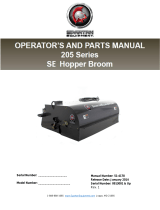 Spartan Equipment SE21572M Owner's manual
Spartan Equipment SE21572M Owner's manual
-
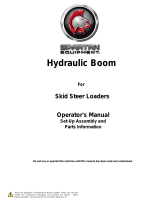 Spartan Equipment SE900770 Owner's manual
Spartan Equipment SE900770 Owner's manual
-
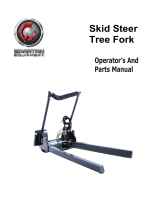 Spartan Equipment 101502 Owner's manual
Spartan Equipment 101502 Owner's manual
-
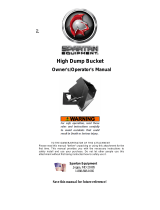 Spartan Equipment SE81HDB Owner's manual
Spartan Equipment SE81HDB Owner's manual
-
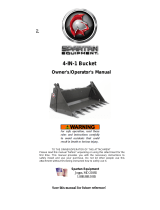 Spartan Equipment SE664IN1BISWT Owner's manual
Spartan Equipment SE664IN1BISWT Owner's manual
-
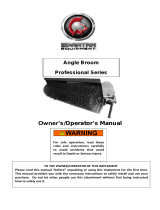 Spartan Equipment SE48ABHP Owner's manual
Spartan Equipment SE48ABHP Owner's manual
-
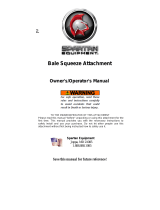 Spartan Equipment SEBSSSLES Owner's manual
Spartan Equipment SEBSSSLES Owner's manual
-
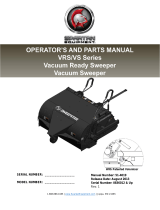 Spartan Equipment SEVRS7M Owner's manual
Spartan Equipment SEVRS7M Owner's manual
-
 Spartan Equipment SE100145 Owner's manual
Spartan Equipment SE100145 Owner's manual
Other documents
-
AGT INDUSTRIAL AGT-HDRC72 Owner's manual
-
AGT INDUSTRIAL AGT-HCRC72 Owner's manual
-
 Sweepster WSP36 series Operator And Parts Manual
Sweepster WSP36 series Operator And Parts Manual
-
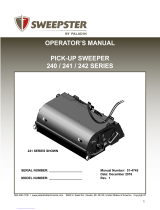 Sweepster 242 Series User manual
Sweepster 242 Series User manual
-
Woods Equipment PB600-2 User manual
-
 Sweepster WSP36 series User manual
Sweepster WSP36 series User manual
-
Stark 81067 User manual
-
Snapper 151-3845 User manual
-
Toolots KD-1400W User manual
-
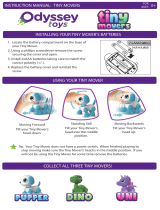 Odyssey Toys TINY MOVERS User manual
Odyssey Toys TINY MOVERS User manual


















































